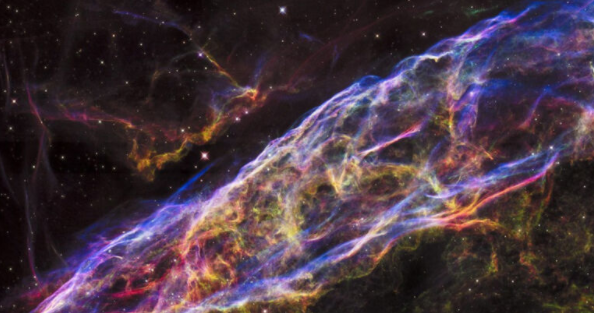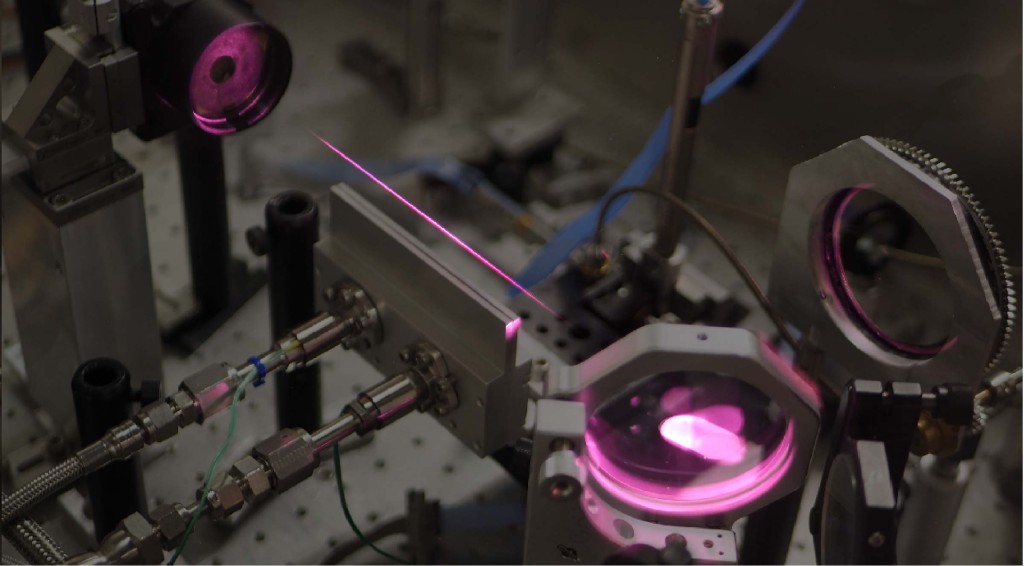A researcher holds the scaffolding with tiny copper foils attached. These copper pieces will be struck with lasers, heating them to thousands of degrees Fahrenheit.
Credit: Hiroshi Sawada
Topics: Applied Physics, Lasers, Materials Science, Plasma, Radiation, Thermodynamics
For the first time, researchers monitor the heat progression in laser-created plasma that occurs in only a few trillionths of a second.
A team of researchers supported by the U.S. National Science Foundation has developed a new method of tracking the ultra-fast heat progression in warm, dense matter plasmas — the type of matter created when metals are struck with high-powered lasers. Published in Nature Communications, the results of this study will help researchers better understand not only how plasma forms when metal is heated by high-powered lasers but also what's happening within the cores of giant planets and even aid in the development of fast ignition laser fusion with energy-generating potential here on Earth.
The research team aimed a high-powered laser at very thin strips of copper, which heated to 200,000 degrees Fahrenheit and momentarily shifted to a warm, dense matter plasma state before exploding. At the same time, the researchers used ultrashort-duration X-ray pulses from an X-ray free-electron laser to capture images of the copper's transformation down to a few picoseconds or trillionths of a second. By doing so, the researchers were able to observe the ultra-fast and microscopic transformation of matter.
"These findings shed new light on fundamental properties of plasmas in the warm dense matter state," says Vyacheslav Lukin, NSF program director for Plasma Physics. "The new methods to probe the plasma developed by this international team of researchers may also inform future experiments at extremely high-powered lasers, such as the NSF ZEUS Laser Facility."
Researchers track plasma creation using a novel ultra-fast laser method, National Science Foundation

